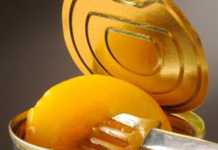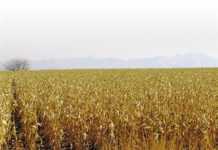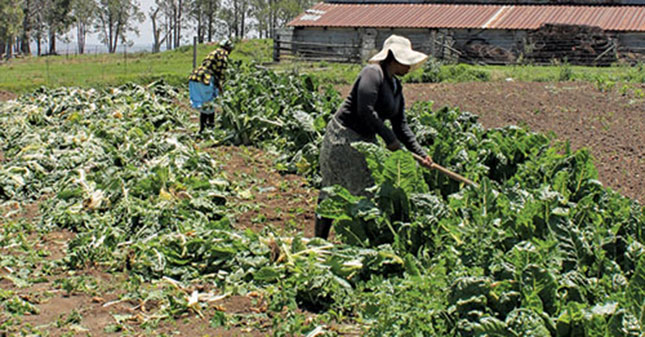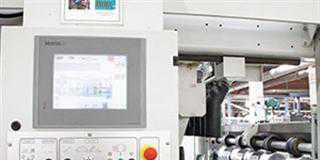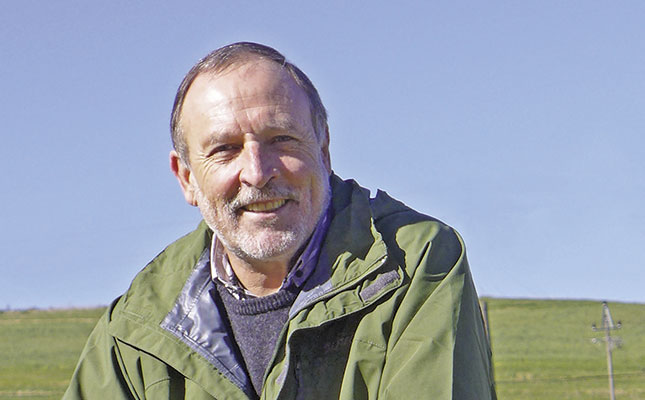
Photo: Denene Erasmus
Charles Hughes will be stepping down as managing director of Tru-Cape Fruit Marketing at the end of this year. He became group marketing manager of the Two-a-Day Group in 1990, before being appointed as managing director in 1995. Six years later, Hughes moved to Tru-Cape Fruit Marketing, marketers of up to 40% of all apples and pears produced in South Africa. During his time with the company he developed the brand into a recognisable and trusted name for which consumers are willing to pay a premium.
Read: Tru-Cape Fruit MD retires
Please give a brief overview of your time in the apple and pear industry and how the Tru-Cape brand was established.
When I started working at Two-a-Day, the South Africa agricultural sector was still highly regulated and all branding and marketing was being done generically. But soon after that, things started changing when South Africa embraced a free market system. One of the objectives I was tasked with at the time was to establish Two-a-Day as a brand for apples and pears. I was given almost no budget to achieve this and knew little about apples and pears.
Within about five years, we managed to turn Two-a-Day into the leading SA brand for apples and pears. One of the key elements in our success was the superior quality of our products. We then looked at taking our brand overseas, but soon realised we didn’t have sufficient critical mass to make a real impact as an exporter. The result of our efforts to bring industry players together was the formation of Tru-Cape, which was founded in 2001 to distribute and market for South Africa’s leading apple and pear growers.
During the past 12 years, the Tru-Cape brand has emerged as the flagship brand for SA apples and pears worldwide, despite representing only 3% of apple and 1% of pear production worldwide.
Apple exports to Africa have grown significantly. How important is this market for the local deciduous fruit industry and should it become the sole focus for our apple and pear exports?
Africa has definitely emerged as a very important market. About six years ago, South Africa was exporting one million cartons per year into Africa; now we’re supplying nine million cartons a year. This growth in demand has to a large extent been driven by Chinese investment and development in Africa, which has created new employment opportunities in several African countries.
I think we’ll see about 20% growth in demand per year from Africa for the next three to five years before the market becomes saturated. The good news is that South Africa already plays a dominant role in supplying this market. But we shouldn’t focus only on Africa. To spread risk and maximise returns by getting the best possible price for our products, we have to be present in a range of markets around the globe. Africa can’t absorb our entire product range. Pears, for example, are not very popular on the continent.
You’ve been trying to secure access to the Chinese market for more than a decade. What have you learned about marketing fruit in that country?
China is a very complex country – I’ve visited it 55 times in 17 years. In the beginning, it was, to say the least, a bit of a mess. They were still emerging from a strict communist environment, and there were no border controls and relatively free access to the markets. But things have changed since China joined the World Trade Organisation and started trading according to ‘real world rules’.
Now, getting into China is a process. There are so many layers you have to wade through, working your way up from the bottom, starting with regional traders and government officials, all the way up to central government in Beijing. We were extremely lucky to have had a good relationship with Dr Mono Masheba, South Africa’s former agricultural attaché in Beijing.
When I first met him, he knew almost as little about trading with China as I did, but we introduced him to some of our connections, and this allowed him to develop the relationships that eventually paved the way for South Africa to start exporting citrus in 2005 and grapes in 2007. Unfortunately, after eight years in China, he was recalled. In my opinion, that was when the relationship, in terms of agricultural trade, between China and South Africa started going wrong.
There never seems to be any urgency from government to gain effective entry into China. I spent 14 years trying to secure a place for our products in China and one of my biggest regrets is that I was unable to do so.New Zealand, Chile, France, Belgium and North America have all managed to obtain access to the Chinese market for apples. Despite being part of Brics and having provided Chinese authorities with all the phyto-sanitary risk assessment information they required, South Africa has achieved nothing.
We’d hoped that the final paperwork would be signed at the Brics summit in Durban earlier this year, but once again, bureaucratic inertia on the part of the Department of Agriculture, Forestry and Fisheries (DAFF) caused the matter to be stalled indefinitely. I remain hopeful that things will change. DAFF has now appointed Dr Masheba as a consultant to assist the industry in gaining better access to Asian markets. A great benefit of exporting to China is that they are willing to pay for quality, and SA producers need access to this kind of high value market to increase returns.
What have you learned about farmers in South Africa?
When South Africa first implemented the free market system, many producers were ignorant about the requirements of world markets, mainly because they’d never had access to any marketing information. But the situation has changed; most farmers are now far more enlightened about how the market works and what it requires than they were 20 years ago.
Having said that, they remain a complex bunch. Out of 100 farmers, the top 10 can earn up to four times more per hectare of fruit than the bottom 25, because they pay more attention to orchard management and respond to what the market demands.
Some farmers will always be difficult to work with, and it’s usually those who lack understanding of how the market works.
What are the main challenges local apple and pear farmers will face during the next five to 10 years?
Cost management. Farmers should expect to see between 12% and 15% increase in total costs per year. The major paper producers in South Africa are switching from paper to pulp. This means that we’ll have to start importing the paper needed to produce boxes for packaging. And since there’ll be little local competition, paper importers will be able to charge whatever they want.
I don’t want to label increasing labour costs as a problem because I believe farm workers and other labourers employed in the agricultural value chain should be paid a fair wage. But I think that during the farm labour strikes in the Western Cape last year, the industry missed out on a golden opportunity. Instead of fighting each other, the industry should have lobbied for better prices so that farmers could afford higher wages.
Our international and domestic customers were very quiet during the strikes because they realised there was going to be a cause and effect. In the end, they readily accepted that they had to pay us more money so that producers could pay their workers a higher wage. For the domestic market, it meant that we had to increase the price of apples by R1 per 1,5kg.
Should farmers be investing in mechanisation to help manage labour cost?
No, on-farm mechanisation is not a good option for apple and pear farmers right now. About 65 billion pieces of fruit are picked every year in South Africa and this has to be handled carefully, by hand, so that it doesn’t suffer any bruising or other damage. The industry will remain labour-intensive and producers will just have to find ways of managing orchards better to help increase labour productivity.
But the rest of the value chain could benefit from investing in further mechanisation.
If you were an apple or pear farmer in South Africa, what would you be investing in right now?
I’d be investing in a product that could be sold in all the markets around the world. Cultivar choices have to be based on a product suited to all tastes and in demand globally, not only in a few niche markets. I firmly believe the apple and pear industry has a great future, but some changes need to be made. Producers have to get rid of old, low-value varieties and increase production of newer, better fruit with better yield potential and much higher pack-out. Producers can no longer afford to send 30% or more of their harvest to the juice factory. They need a pack-out of at least 80% of the packable portion to ensure a positive return.
Do you believe cultivar development and other research and development functions in South Africa are sufficient to ensure we stay competitive?
Unfortunately, I think we as a country are falling behind and that is why at Tru-Cape we started our own cultivar development programme. There has been some improvement in the last couple of years, but we are far behind the leading countries in apple and pear cultivar development. The industry cannot afford to fund a robust research and development function for apples and pears. We need government support in this regard.
What will you do next?
I’m staying in the industry, but will be doing something else. I still believe there are many opportunities in this industry and am confident that I’ll have some fun in the years to come.
Phone Charles Hughes on 021 850 1808 or email [email protected].
This article was originally published in the 8 November 2013 issue of Farmer’s Weekly.


